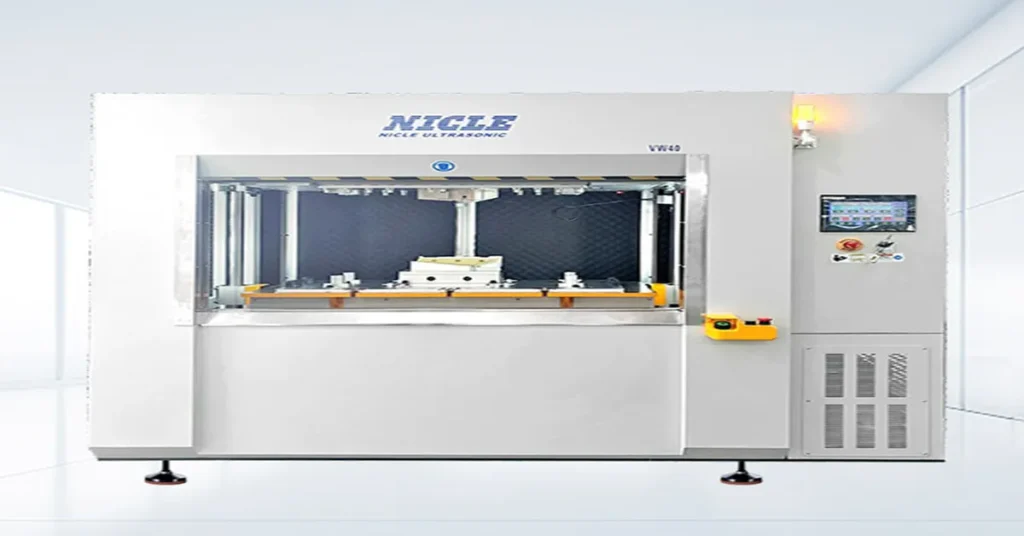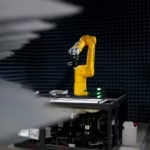Vibration welding plastic is an increasingly popular manufacturing method used to join plastic components by generating heat through mechanical vibrations.
However, vibration welding plastic carries certain environmental implications, especially when it comes to energy consumption, waste reduction, and the use of recycled materials.
This article examines these environmental aspects and the potential for improving sustainability through plastic vibration welding.
What is Vibration Welding Plastic?
Vibration welding is a thermoplastic welding technique that uses high-frequency mechanical vibrations to generate heat at the interface of two plastic parts, causing them to melt and fuse together. The process creates strong, durable joints without external heating elements or additional materials like glue.
However, while vibration welding offers several benefits, its environmental impact needs to be carefully considered in terms of energy consumption, waste generation, and the potential use of recycled plastics.
Energy Consumption in Vibration Welding Plastic
One of the key concerns with vibration welding plastic is the energy required for the process. Energy consumption is a crucial factor in evaluating the sustainability of any manufacturing method, and vibration welding plastic is no exception.
1. Energy Demand in Plastic Vibration Welding
The energy consumption of plastic vibration welding is largely determined by the need to generate the high-frequency vibrations that cause the plastic to melt and fuse. These vibrations are typically produced by an ultrasonic or piezoelectric transducer, which converts electrical energy into mechanical vibrations.
The vibrations typically occur at frequencies ranging from 20 kHz to 60 kHz, and the power required for this process can vary.
During the welding cycle, which lasts just a few seconds to a couple of minutes, the system can draw between 5 to 15 kW of power. While the duration of each cycle is relatively short, the intensity of the energy required for vibration welding plastic can be quite high. This makes energy efficiency a crucial consideration, especially in large-scale manufacturing operations.
2. Energy Efficiency of Vibration Welding Plastic
Despite the relatively high energy demand during each welding cycle, vibration welding plastic is considered an efficient process in terms of energy usage compared to other plastic joining methods.
The main reason for this is that the heat is generated directly at the interface of the two parts being welded. This localized heating reduces the need for external heat sources and minimizes energy loss, as the heat is not dissipated throughout the material.
Moreover, since vibration welding plastic is typically an automated process, the system can be fine-tuned to use energy optimally. For instance, vibration plastic welding machine parameters such as vibration amplitude, frequency, and pressure can be adjusted to reduce energy consumption while maintaining high-quality welds.
3. Optimizing Energy Usage in Linear Vibration Welding
Linear vibration welding is a variation of vibration welding plastic where one of the parts is moved in a linear motion rather than an oscillating pattern. Linear vibration welding can be more energy-efficient in some cases, especially when working with larger or more complex components.
In large-scale operations, linear vibration welding allows for better control of energy use, and automation can further optimize the process to reduce overall energy consumption.
Waste Generation in Vibration Welding Plastic
Another important environmental consideration in vibration welding plastic is waste generation. Waste in the manufacturing process can come in many forms, including excess material, scrap, or byproducts.
1. Material Waste in Plastic Vibration Welding
Unlike methods like injection molding, where excess material is often discarded, vibration welding can help to reduce the amount of wasted plastic.
Furthermore, vibration welding plastic does not require external adhesives, solvents, or other chemical substances, all of which can generate waste and contribute to environmental pollution. This clean welding process makes vibration welding plastic an attractive option for industries where waste reduction is a key concern.
2. Post-Welding Waste and Scrap
Vibration welding generally leads to fewer defects than other methods, making it a more efficient option for reducing post-welding scrap. Since the heat is generated only at the welding interface, there is less risk of warping or distortion in the plastic components. This leads to fewer instances where parts need to be scrapped or reworked.
3. Reducing Waste with Process Control
In addition to producing less material waste, vibration welding plastic allows for more precise control over the welding parameters. Manufacturers can optimize vibration frequency, pressure, and weld time to further reduce waste and improve the quality of the final product.
By automating these processes, manufacturers can further reduce human error and ensure that minimal material is wasted during each weld cycle.
Click here to learn more about the latest equipment available for welding plastic together.
Using Recycled Plastics in Vibration Welding Plastic
One of the most significant ways to reduce the environmental impact of vibration welding plastic is by incorporating recycled plastics into the process. Plastic waste is a growing concern, and the use of recycled plastics can help reduce the demand for virgin plastic, which is energy-intensive to produce.
1. Compatibility of Recycled Plastics in Vibration Welding
Recycled plastics are increasingly being used in plastic vibration welding applications, although certain challenges exist. The main issue with recycled plastics is that they may have degraded properties compared to virgin plastics, such as reduced strength or altered melting points. This can make it more difficult to achieve high-quality welds.
However, with the right sorting and blending, recycled plastics can be made suitable for vibration welding. By adjusting the vibration welding parameters, such as frequency and pressure, manufacturers can compensate for the differences in material properties and achieve good weld quality.
2. Benefits of Recycling in Vibration Welding Plastic
Using recycled plastics in vibration welding has several environmental benefits. First and foremost, it reduces the demand for new plastic production, which is a major contributor to greenhouse gas emissions and resource depletion. Second, by recycling plastic waste, manufacturers can help keep plastic out of landfills, contributing to a more sustainable waste management system.
Moreover, recycled plastics tend to be less expensive than virgin materials, which can reduce the cost of production. This makes it economically viable for manufacturers to adopt recycled materials in their vibration welding processes while also benefiting the environment.
3. Challenges of Using Recycled Plastics
While the use of recycled plastics in vibration welding plastic has clear advantages, it also comes with challenges. Recycled plastics may require more stringent sorting and cleaning to remove contaminants, such as metals or other plastic types, that can interfere with the welding process.
Additionally, recycled materials may be more prone to defects, which can affect the overall strength and reliability of the weld.
To mitigate these challenges, manufacturers must carefully evaluate the quality of the recycled plastics before use and make adjustments to the welding parameters as needed.
Conclusion: Making Vibration Welding Plastic More Sustainable
Vibration welding plastic offers environmental benefits such as energy efficiency and minimal post-welding waste. It uses less energy by generating heat directly at the welding interface, and incorporating recycled plastics further reduces its environmental impact.
Despite challenges in using recycled materials, advancements in sorting and recycling technologies make it a viable option for sustainability. As industries pursue eco-friendly practices, vibration welding’s efficiency and potential for recycling will play a key role in reducing plastic waste and supporting sustainability goals.







